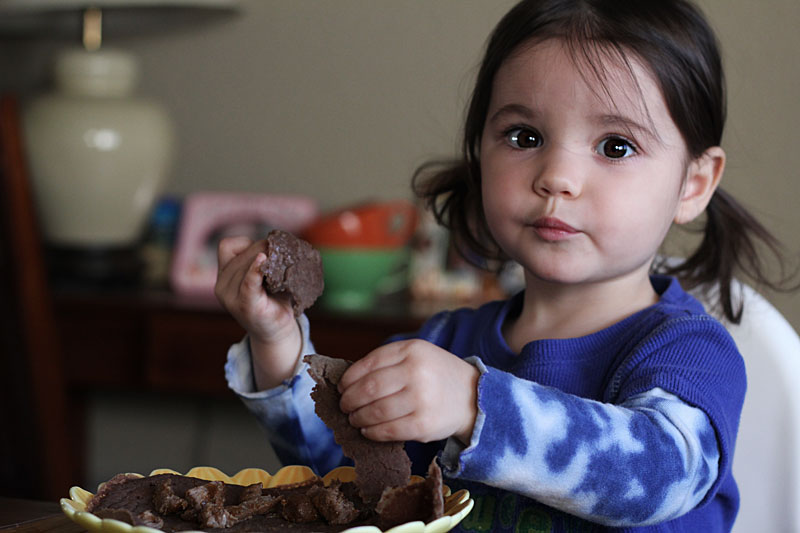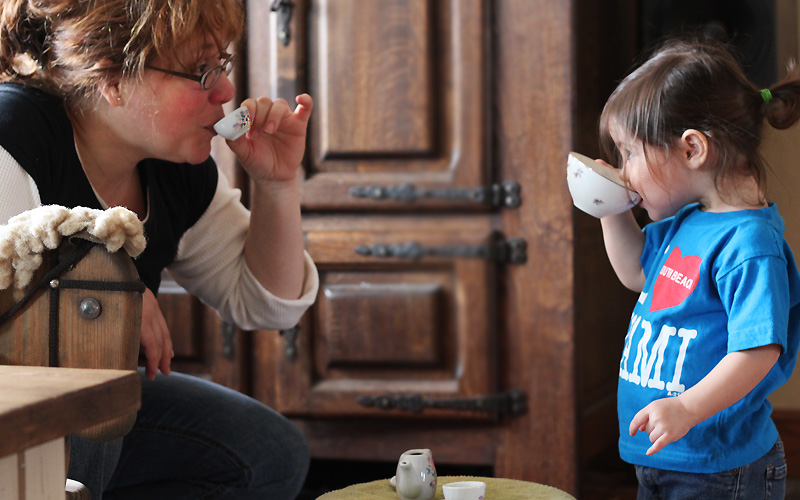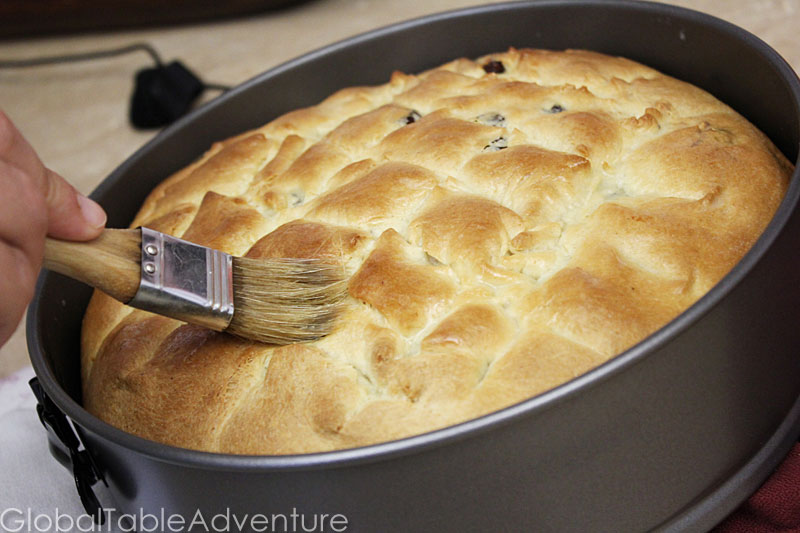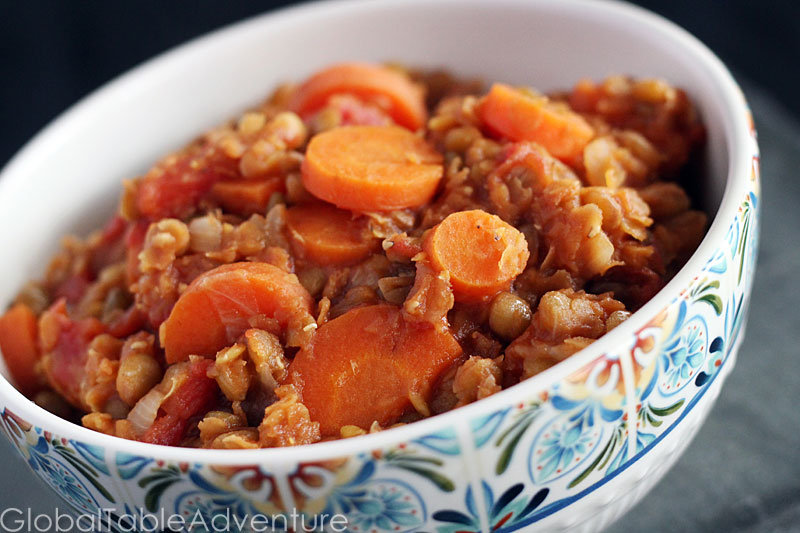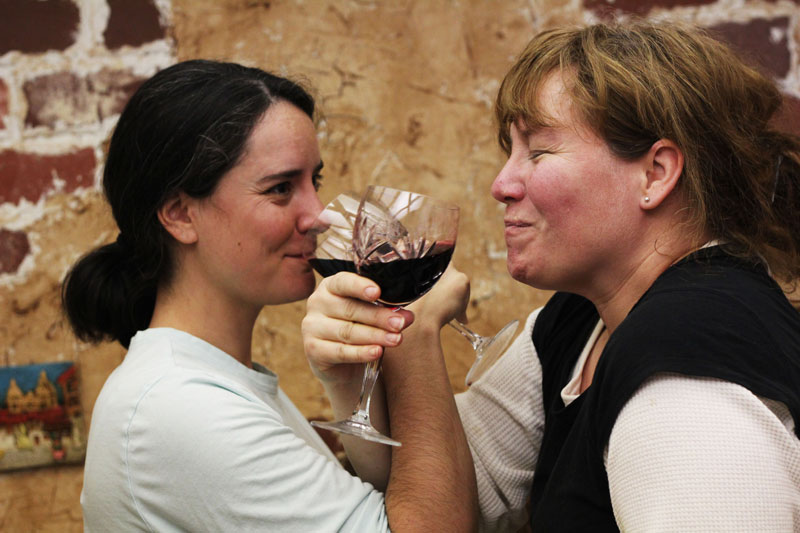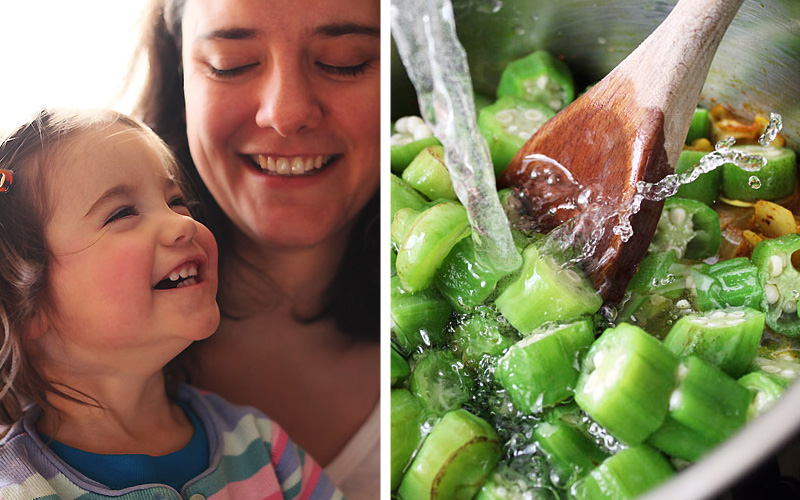
Coffee is said to have originated in Ethiopia. Today Ethiopian coffee ceremonies are common after large meals, even at restaurants. Women will roast beans in front of the guests. Then she’ll grind the beans, perfuming the room, and brew them in a clay coffee pot, or jebena. The coffee is served in small cups called si’ni. Diners have their choice of salt or sugar. Traditionally, every guest is offered 3 cupfuls- the same grounds being brewed each time, making each consecutive cup weaker. My Rendition At best, I was ill-prepared to perform an Ethiopian coffee ceremony. #1, I live in Tulsa, Oklahoma. #2, I lack every single piece of traditional Ethiopian coffee-making equipment there could possibly be. In fact, the only proper element I have is a bag of green coffee beans. Tilda’s parents brought them all the way over from Ethiopia, known as the birthplace of coffee. At least the coffee was right. I got to work, putting my college nickname “MacGyver” to good use. What follows are the results of a free-spirited, improvisational coffee …
Read More
One of my mom’s favorite expressions is “Did you get it straight from the horse’s mouth?” She likes to ask me this when I am at my most panicked, assumption-burdened self. While the image it conjures up isn’t exactly pretty, the saying gives me perspective when I need it most. If there was ever any doubt about the food of Ethiopia, I’m going to put it to rest right now. I cooked, I ate and I am here to tell you that the food of Ethiopia is intense, flavorful, and fit for any dinner party. You can say you got it straight from the horse’s mouth. Better yet, you can make some of the food from this menu and find out for yourself. Eating without utensils is quickly becoming a favorite hobby of mine. If the potential mess scares you, have no fear. Ava will be happy to give you a lesson. She’s a pro (although, technically, the left hand is never used for eating in Ethiopia. It’s called the unclean hand and I’ll leave …
Read More

One of Miss Ava’s friends, Tilda, is from Ethiopia. While she’s not exactly talking yet (she turned one in December), her parents are talking and everything they’ve said about Ethiopia makes me hungry. They adopted Tilda last year and spent some time in the country getting to know the culture and, of course, the food. Here’s the summary: if you’re into spices, you’re in luck. They brought back bags of berberé seasoning – so much, in fact, that they didn’t think twice about giving me an entire cup of their precious stash. Almost everything is spiced with berberé seasoning [Recipe], especially the standard wat (stew) made from lamb [Recipe], chicken, lentils, or beans. Be sure to enjoy Wat with Injera [Recipe], teff pancakes that are used to scoop up the food instead of silverware. Now, for something that Tilda’s parents did not tell me – I got this little nugget from Andrew Zimmern. In his Ethiopian episode he shares that if you’re really lucky Ethiopians will offer you raw meat. Raw meat is a delicacy – the fresher …
Read More
THE SCENE “It’s alive!” my sister gasped. I chuckled, shrugging off the suggestion as a joke. “No look!” she said, pointing into the bowl. I brought my face closer. Just wait, she said. Bloop. Bloop. Two bubbles wiggled their way to the surface, making the blackish, scuzzy liquid quiver slightly. The scent of alcohol and yeast clung to the air. It is alive, I said, “and it smells really … strong!” “It’s totally teff” she said. We recoiled, laughing. Neither of us was sure what to do next. I scanned through the pile of injera recipes that littered the counter tops while Elisa sipped her wine. A few of the recipes suggested pouring off the liquid. Several didn’t mention it. There was no question that I would be pouring it down the drain. There was just no way that liquid was supposed to be part of the injera. Not any injera I’d be eating, anyway. As I tipped the bowl over the sink, I had the creepy, crawly feeling that I was about to dump the …
Read More
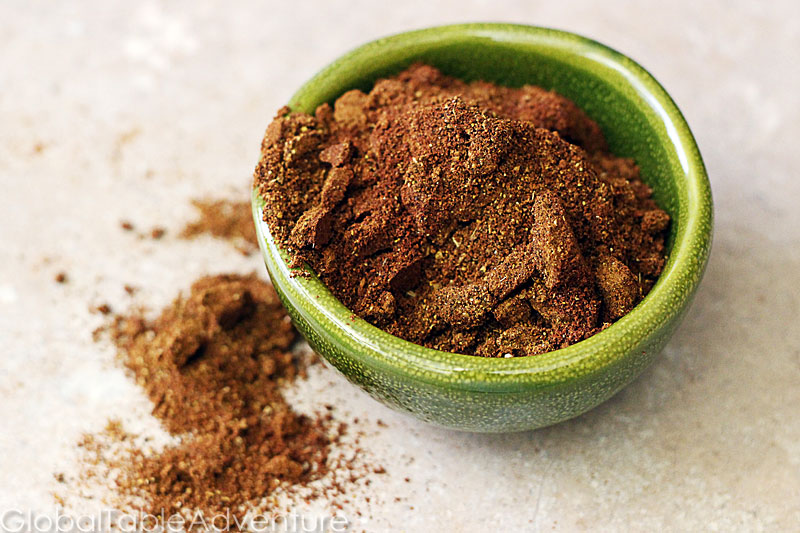
Berberé is a spicy and savory spice mixture used all over Eritrea and Ethiopia. This blend goes well with chicken, beef, or lamb, and would also be great with lentils and other legumes. I’ve used it with our Doro Wat (chicken stew) and Awaze Tibs (lamb stew) recipes. A few sprinkles would also be great in our Lentil Wat. Makes about 1/4 cup Ingredients: 3 cloves 1/2 tsp coriander seeds 1/2 tsp fenugreek seeds 1 tsp cumin 1 Tbsp paprika 1/4 tsp peppercorns 1/4 tsp ground ginger 1/4 tsp ground cinnamon 1/4 tsp ground turmeric 5 whole allspice balls 1/4 tsp cardamom seeds (removed from pods) 1/8 cup chili powder Method: Heat the spices in a clean, dry skillet to toast them. Once cool, grind them in batches. Keep going until most of the stragglers get ground up! Hey, that’s my sister! Enjoy. Berberé |Hot East African Spice blend Votes: 0 Rating: 0 You: Rate this recipe! Print Recipe Berberé is a spicy and savory spice mixture used all over Eritrea and Ethiopia. This blend goes well with …
Read More
Makes one 8″ round loaf My sister and I whipped up this Eritrean-inspired sweet bread and proceeded to stuff our faces with it all day long, until even the crumbs were gone. The cumin flavor is unusual, but goes perfectly with the sweet raisins. While most Hembesha are made thin and extremely ornately, my sister and I decided to make this thick, quick and dirty version so we could spend more time playing with Ava on a balmy 70F degree day in February. And so we could have more surface area to slather the hembesha with butter. Purist or not, I hope you can understand the lure of springtime in the winter. Ingredients: 4 – 4 1/2 cups all purpose flour 2 tsp instant dry yeast 1/4 tsp ground cardamom 1 tsp cumin 1/2 cup (1 stick) softened butter, plus extra for brushing 2/3 cup raisins 1 tsp salt 1/3 cup sugar 2 eggs 1 cup lukewarm milk Method: Grease an 8 inch springform pan. In the bowl of a standing mixer, add the flour, …
Read More
Serves 4 Let’s thank Eritrea for this giant, vegan bowl of deliciousness – a happy mixture of spicy lentils, offset by sweet carrots and tomatoes. The heat comes from berberé, the regional spice blend that should be added with a heavy hand. You know, for authenticity purposes. And lots of sweating. Edited to add: One of our readers posted a great tip in the comments section of our Ethiopian menu which also applies to Eritrean cooking: When I watch Ethiopian cooks in Ethiopia they chop up red onion very tiny (I use a food processor and stop short of pulverizing as it helps it cook down faster) and then dry cook it in the pan — no oil. They dry cook it stirring constantly until it turns almost into a paste — imagine the consistency of a good roux. It takes a lot of onion to get the right amount of this paste. Then add the oil/lentils, sauce stuff, etc. The onion paste is actually the thickener for the wat — if you don’t do …
Read More
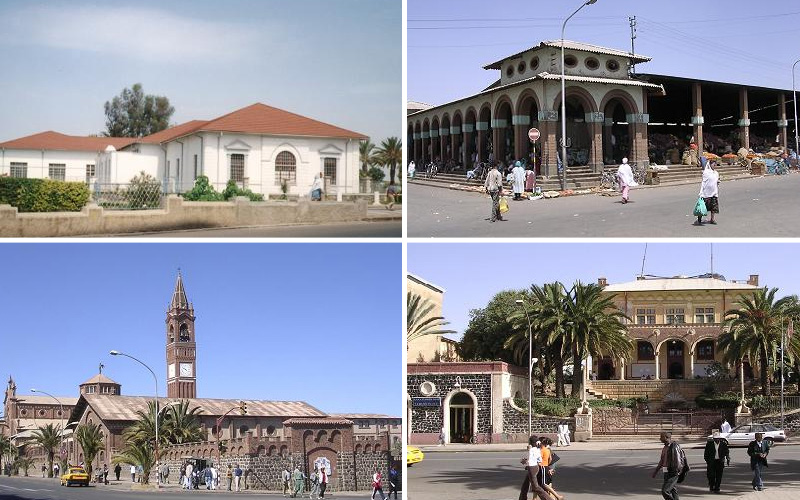
I like a good surprise. Like when a nun wears pink socks. Or when a not-so-promising movie is actually funny, but – and this is very important – only because you had supremely low expectations (Men who Stare at Goats, anyone?). Consider Eritrea – a hot African land that enjoys injera, spicy berberé seasoning, and lentil wat (stew) – all regionally appropriate. All very expected. Then, look down at Eritrea’s proverbial pink socks, a.k.a. a burst of Italy in an otherwise traditional African nation. In the capital, Asmara, you can sip on a cappuccino and admire the colonial architecture – designed to resemble Italian villas as well as European art deco structures. The Fiat Tagliero gas station is even made to look like an airplane. More than 50,000 colonizers set up their lives in Eritrea, so it is no wonder they eventually called their new home “Little Rome.” Not bad for pink socks! ** Photos courtesy of Carsten ten Brink and Hans van der Splinter (who has a web site devoted to showing the world the beauty …
Read More

Do you dream of cleaning out your cluttered silverware drawer? Are you totally tired of your dishes? Try a happy bite of Injera, the gorgeous Teff flatbread adored in Eritrea, Ethopia, and other East African countries. Sour and funky… Injera is almost as thin as a crepe, but spongy like a pancake … and is traditionally used both as a platter for spicy stews and to replace silverware. Three tips for foolproof Injera making: 1. Consistency Make sure the batter is almost the consistency of crêpe batter (between crêpes and pancakes) . Any thinner and the bubbles won’t form. Much thicker and it won’t look like traditional Injera. Practice makes perfect. 2. The Pan If you don’t have the traditional mitad (I didn’t), you can use a large, short sided pan. You’ll have the best luck with a nonstick pan or a really well seasoned crêpe pan. Cover loosely with aluminum foil if it doesn’t have a lid. 3. Play it cool Absolutely cool the Injera before stacking or attempting to move it around much. They are …
Read More
Sisters. We share the same mother, the same nose, and the same penchant for immature giggle-fits. She took me to the mall when I was too young to drive. She encouraged me not to get a tattoo. She held me strong after our brother died in 1992. She didn’t blink when I dyed my hair purple at 16. And, this week? She came to pledge her support in the spiritual journey of my sweet Miss Ava. In the process she rolled up her sleeves and helped me cook our Eritrean Global Table. And she suggested I start dying my hair again. Ah, the honesty of sisters. Teff Pancake (Injera) [Recipes] A thin sour pancake pocked with little holes and used as a plate and to scoop up thick stewed vegetables and meats. Berberé – Hot East African Spice mix [Recipe] This popular spice blend is known for scorching heat, but also a balance of background flavors including cinnamon, cumin, paprika, turmeric and more. Spicy Lentil Stew [Recipe] Made with little more than lentils, onions, carrots, and berberé …
Read More
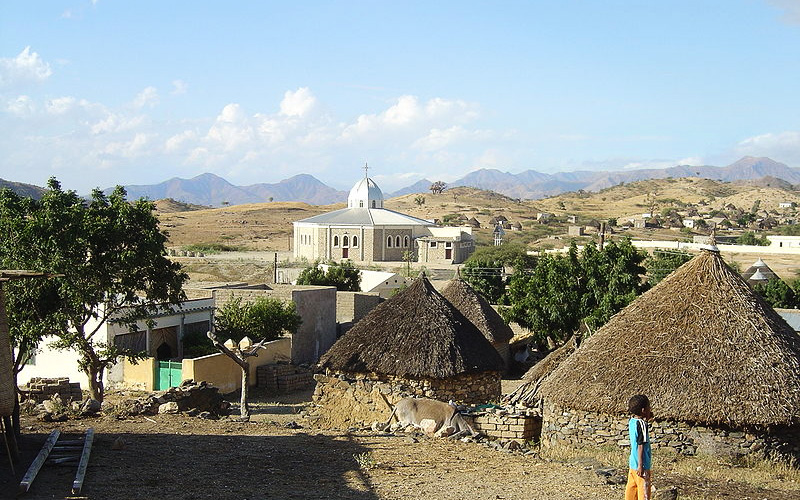
Think Emeril Lagasse knows how to “kick it up a notch?” Check out the food of Eritrea, nestled on the northeastern side of Africa. This hot, dry land holds claim to spicy, deeply seasoned foods very similar to its neighbor, Ethiopia. Eritreans kick it up with berberé [Recipe] – a spice blend made with loads of chili powder, cumin, fenukgreek, cinnamon and half a dozen other spices. Rather than vigorously dusting it on top of the food and shouting “bam!”, the people stir spoonful after spoonful into their meals. If you use as much as a local… well, expect tears. Berberé amps up nearly all dishes, including stewed chicken, lamb, and beef. Even more common than all that meat? Spicy lentils [Recipe] and chickpeas. (Side note – while they have a lengthy shoreline, most fish is exported for consumption) Regardless of what you put berberé on, know this: it will make you sweat. Finger food, anyone? In Eritrea, plates are covered up – blanketed – by the mighty injera, a giant pocked flatbread/pancake made with …
Read More
THE SCENE: A thick strand of ooze connected my spoon to the serving bowl. I wiped it up quickly, before mounding the spiced okra onto Ava’s plate. She looked at the dark green mountain. She looked at me, shook her head, and signed for more fish. This wasn’t going to be easy. “Try the okra, Ava,” I said, cloaking my desperation with a cheerful voice. “Okra. Okra.” I repeated, slowly. I pointed to the plate and smiled. “Try it!” We watched her. We waited. Ava scrunched up her nose and shook her head again. She pushed her food around a little, then squealed with delight. Goldmine! She found another piece of fish, hiding behind the okra. She popped it into her mouth and smiled. One more time I offered her a bite. Just in case. Again, she shook her head but, instead of saying no, she said – clear as day – “Okwa! Okwa. Okwa!” We applauded her new word and encouraged her to say it a few more times. She did, beaming and grinning. She was so happy …
Read More


